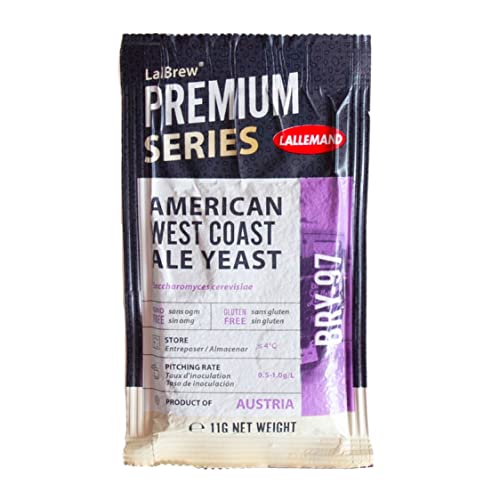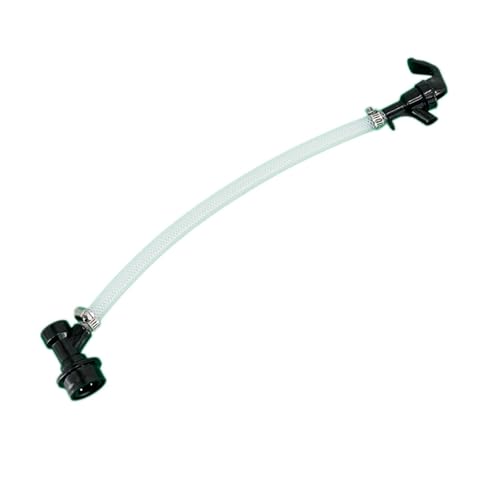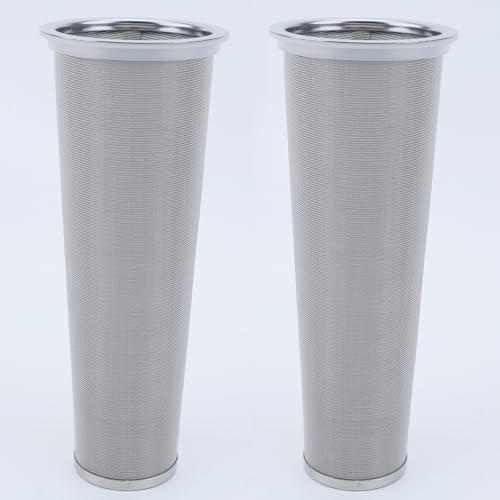Derrick Hakim
New Member
- Joined
- Jul 14, 2014
- Messages
- 3
- Reaction score
- 0
The beauty of brew-in-a-bag (BAIB) is its simplicity and great results you can get from this easy all-grain home brewing method. It's the natural "next step" that extract brewers can take to get their brewing to the next level. For those who don't know much about BIAB or all-grain brewing in general, once you extract the sugars from the grains through the mashing process, you've created your wort. After that, you pick right back up at the boil, and continue your brew day just as you would with extract.
What we're going to focus on here are the basic water calculations you need to do before you get started with your BIAB brew day. One thing that makes this all-grain method different from extract brewing is the full volume of water you'll need right from the start. With extract, you typically need to add water to your primary fermenter (usually 2-3 gallons) to get your wort level up to the desired volume. With BIAB, you'll need to calculate the amount of water from the start that will yield that final packaged amount you'll bottle or keg. To do this, you need some basic information from the recipe and you'll need to know a bit about your equipment's boil-off rate.
To make this easy, we're going to use a simple and free calculator located here:
http://biabbrewing.com/brew-day-prep/biab-calculators-and-software/

You can use this free BIAB calculator to get you started
What Information You'll Need
You'll only go to a couple of sources to get what's needed to calculate your water requirements for BIAB. The first is the recipe and the second is your equipment.
The calculator has some default values to get you started.
Assuming we're going to brew a standard 5 gal/19L batch, get the following information from your recipe:
Total Weight of the Grain Bill in lbs
Total Weight of the Hops in oz
Boil Time in minutes
Mash Temperature in F
You'll take a quick measurement of the temperature of your grain bill to get this value:
Grain Temperature in F

Measuring the temperature of the grains on brew day
This is the information about your equipment you'll need:
Equipment Boil Off Rate (gal/hour)
A simple way to figure this out would be to measure 5-8 gallons of water and fill your kettle with it. Then get it to a rolling boil like you would while brewing, using similar burner settings. Start a timer for one hour with the cover off the kettle. After the water has cooled to approximately what temperature you started with, measure what's left. The difference between your starting value and ending value is your boil-off rate/hour. Be as accurate as you can here, as this value is important.
Interior Kettle Diameter (inches)
This is an optional entry that you can use if you want an easy way to measure how much volume of liquid is in your kettle using a ruler or other measured item. One thing to keep in mind is that temperature will affect volume, that's why we wanted to cool the water down above to get an accurate measurement. For this to work, your kettle needs to be flat-bottomed with symmetrical sides. Most standard brew kettles commercially available are.

Marking a stir paddle to measure the strike water volume in the kettle
For your first few BIAB sessions, you may want to use the default values in the calculator for the following:
Expected Fermentation Trub Loss (default=0.5 gal)
Keep in mind that this could vary depending on your recipe, but should work for many recipes
Grain Absorption Rate (default=0.125 gal/lbs)
Hop absorption Rate (default=0.0365 gal/oz)
Plug Your Numbers in & Start Mashing
Once you have entered your values you'll know how much strike water you'll need and what temperature to bring it up to. You'll notice that the calculated strike water temperature is different than the mash temperature from the recipe (typically 152 F). This is because once you add the grain bill to the strike water, its temperature will change. The calculator will help compensate for that.
For best results, you should also consider double-crushing your grains, mashing for 90 minutes, and performing a mash-out for 10 minutes at 170 F. These additional steps will help with the extraction process (pre-boil efficiency).
Armed with your water requirements, a large grain bag, and a kettle big enough to handle the strike water and displacement of the grain bill, you can be brewing all-grain using the brew-in-a-bag method quickly and easily.
Derrick Hakim runs the website BiabBrewing.com, where he shows what he's learning about BIAB, with articles and videos that detail his entire journey through the Brew-in-a-Bag method of all-grain brewing. Derrick is also the author of Brew In A Bag - Get Mashing With Less Equipment and Steps in the March-April 2014 issue of Brew Your Own magazine.

What we're going to focus on here are the basic water calculations you need to do before you get started with your BIAB brew day. One thing that makes this all-grain method different from extract brewing is the full volume of water you'll need right from the start. With extract, you typically need to add water to your primary fermenter (usually 2-3 gallons) to get your wort level up to the desired volume. With BIAB, you'll need to calculate the amount of water from the start that will yield that final packaged amount you'll bottle or keg. To do this, you need some basic information from the recipe and you'll need to know a bit about your equipment's boil-off rate.
To make this easy, we're going to use a simple and free calculator located here:
http://biabbrewing.com/brew-day-prep/biab-calculators-and-software/

You can use this free BIAB calculator to get you started
What Information You'll Need
You'll only go to a couple of sources to get what's needed to calculate your water requirements for BIAB. The first is the recipe and the second is your equipment.
The calculator has some default values to get you started.
Assuming we're going to brew a standard 5 gal/19L batch, get the following information from your recipe:
Total Weight of the Grain Bill in lbs
Total Weight of the Hops in oz
Boil Time in minutes
Mash Temperature in F
You'll take a quick measurement of the temperature of your grain bill to get this value:
Grain Temperature in F

Measuring the temperature of the grains on brew day
This is the information about your equipment you'll need:
Equipment Boil Off Rate (gal/hour)
A simple way to figure this out would be to measure 5-8 gallons of water and fill your kettle with it. Then get it to a rolling boil like you would while brewing, using similar burner settings. Start a timer for one hour with the cover off the kettle. After the water has cooled to approximately what temperature you started with, measure what's left. The difference between your starting value and ending value is your boil-off rate/hour. Be as accurate as you can here, as this value is important.
Interior Kettle Diameter (inches)
This is an optional entry that you can use if you want an easy way to measure how much volume of liquid is in your kettle using a ruler or other measured item. One thing to keep in mind is that temperature will affect volume, that's why we wanted to cool the water down above to get an accurate measurement. For this to work, your kettle needs to be flat-bottomed with symmetrical sides. Most standard brew kettles commercially available are.

Marking a stir paddle to measure the strike water volume in the kettle
For your first few BIAB sessions, you may want to use the default values in the calculator for the following:
Expected Fermentation Trub Loss (default=0.5 gal)
Keep in mind that this could vary depending on your recipe, but should work for many recipes
Grain Absorption Rate (default=0.125 gal/lbs)
Hop absorption Rate (default=0.0365 gal/oz)
Plug Your Numbers in & Start Mashing
Once you have entered your values you'll know how much strike water you'll need and what temperature to bring it up to. You'll notice that the calculated strike water temperature is different than the mash temperature from the recipe (typically 152 F). This is because once you add the grain bill to the strike water, its temperature will change. The calculator will help compensate for that.
For best results, you should also consider double-crushing your grains, mashing for 90 minutes, and performing a mash-out for 10 minutes at 170 F. These additional steps will help with the extraction process (pre-boil efficiency).
Armed with your water requirements, a large grain bag, and a kettle big enough to handle the strike water and displacement of the grain bill, you can be brewing all-grain using the brew-in-a-bag method quickly and easily.
Derrick Hakim runs the website BiabBrewing.com, where he shows what he's learning about BIAB, with articles and videos that detail his entire journey through the Brew-in-a-Bag method of all-grain brewing. Derrick is also the author of Brew In A Bag - Get Mashing With Less Equipment and Steps in the March-April 2014 issue of Brew Your Own magazine.












































![Craft A Brew - Safale S-04 Dry Yeast - Fermentis - English Ale Dry Yeast - For English and American Ales and Hard Apple Ciders - Ingredients for Home Brewing - Beer Making Supplies - [1 Pack]](https://m.media-amazon.com/images/I/41fVGNh6JfL._SL500_.jpg)













